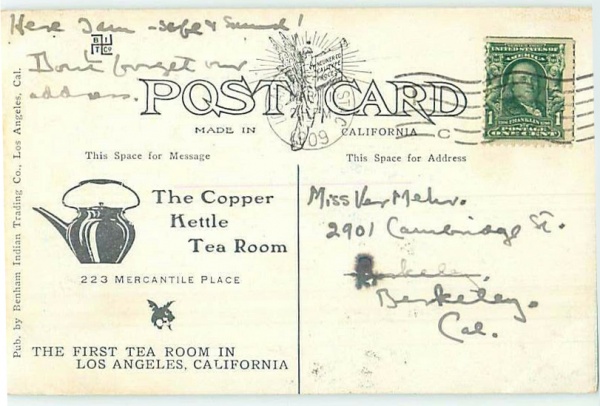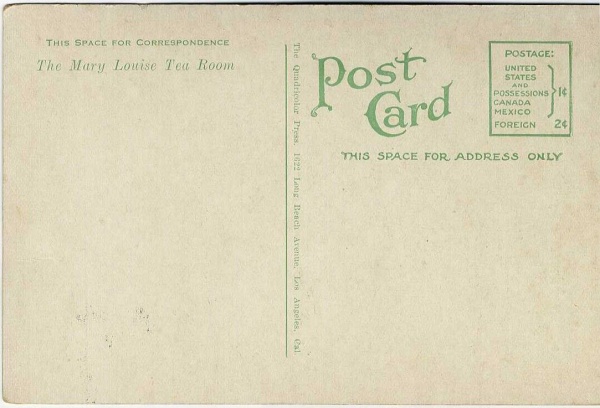California Tea Rooms
From Mystic Tea Room
Revision as of 18:44, 7 September 2020 by Catherine Yronwode (Talk | contribs)
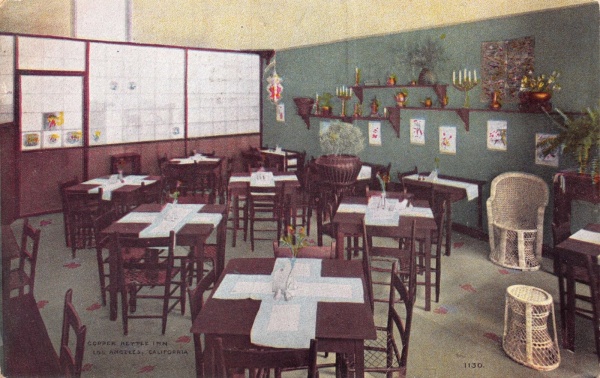
Copper Kettle Tea Room, 23 Mercantile Place, Los Angeles, California, postcard front, circa 1909. The hand-lettered caption on the black and white photo that was the basis for this card reads "Copper Kettle Inn," but that is an error, because all advertising ephemera and references to the establishment in contemporary newspapers and magazines identify it as the Copper Kettle Tea Room. The Copper Kettle opened in 1908 under the proprietorship of two sisters, Smith college alumna Harriet Morris (1880 - 1961) and Barnard College alumna Mildred Morris, helped by their friend Beatrice Wigmore. In addition to tea and light lunches, The Copper Kettle sold Japanese and Chinese basketry and gift wares; by 1915 they were also marketing confections or candies that were sold along the Southern Pacific Railroad route. The building that housed The Copper Kettle -- and, in fact, every shop on both sides of the street, and the entirety of Mercantile Place itself -- was demolished in 1923 as part of a large urban high-rise building program.
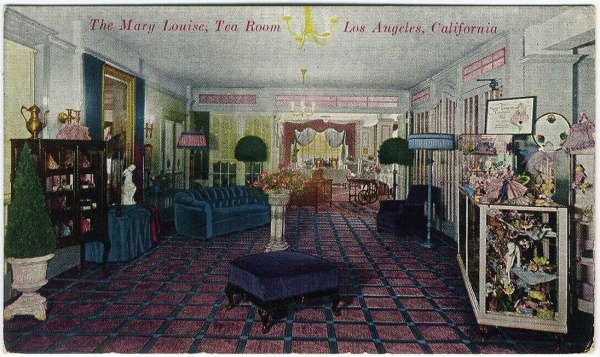
Mary Louise Tea Room Foyer, Los Angeles, postcard front. The Mary Louise Tea Room complex occupied a medium-sized building opposite Westlake Park (now MacArthur Park) in Los Angeles, California. Within its boxy stucco exterior there were rooms furnished according to certain themes. The foyer, which also housed a gift shop, was in lush art deco style. Women used this space not only for casual lunches, but they could reserve rooms for club meetings or private parties, and would therefore meet in the foyer. In addition to some statuary, The Mary Louise gift shop carried quite an amazing array of fine porcelain boudoir half-dolls, as can be seen. (To those who are either curious or enthusiastic about porcelain half-dolls, all i can say is that this site is half-doll friendly, and i may write a page on half-doll tea cozies at a later date, but for the true half-doll experience, you will need to do an internet search on your own to find the motherlode of half-doll imagery and the nexi of half-doll collector conversations.)
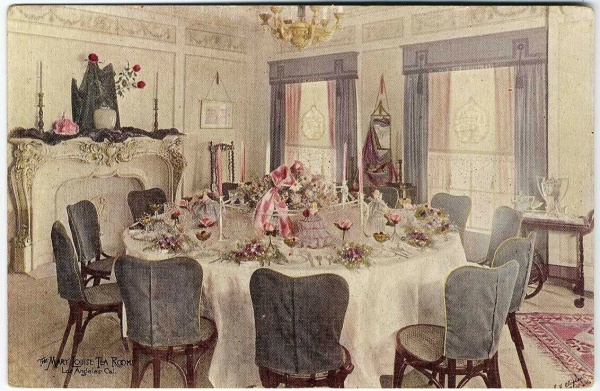
Mary Louise Tea Room, Los Angeles, Interior, postcard front. The main tea room within the Mary Louise complex was rococo or late Baroque French in decor, with a hyper-feminine colour palette of white, pale pink, and warm grey, accented with potted plants. Fabric was used extensively to enhance the decor. Not only is there elaborate drapery, but the backs of the simple bentwood cafe chairs are outfitted with grey slip-covers in a subtle heart pattern. This place is what we used to call "Fahn-Say" (with a fake French accent) when i was a kid.
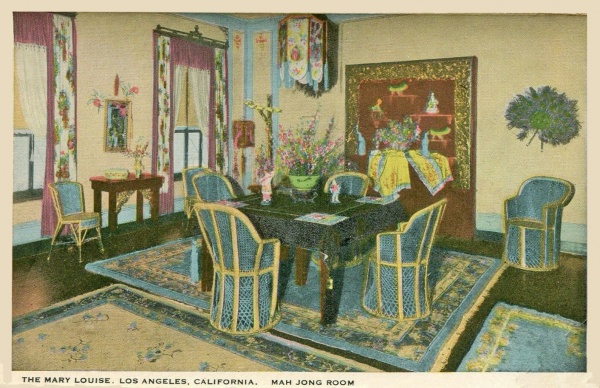
The Mah Jong Room at the Mary Louise Tea Room complex opposite Westlake Park (now MacArthur Park) in Los Angeles, California. This flower-bedecked Chinoisserie room was reserved for parties of women who wanted to play the Chinese game of mah-jong, which was very popular during the 1920s and 1930s. Note the harmonious colour scheme of muted blues and yellows, the gilded curio niche with enshrined Orientalia, the lovely carpets, and the woven rattan furnishings, which are similar to those at the Copper Kettle Tea Room in Los Angeles, California, and at the Sun Parlor Tea Room at the Young Women's Christian Association in Dallas, Texas. Tea came from China, and there were many importers of Asian goods located on the West Coast, so outfitting a tea room as a Chinoisserie was not difficult to accomplish prior to World War Two.
catherine yronwode
curator, historian, and docent
The Mystic Tea Room
